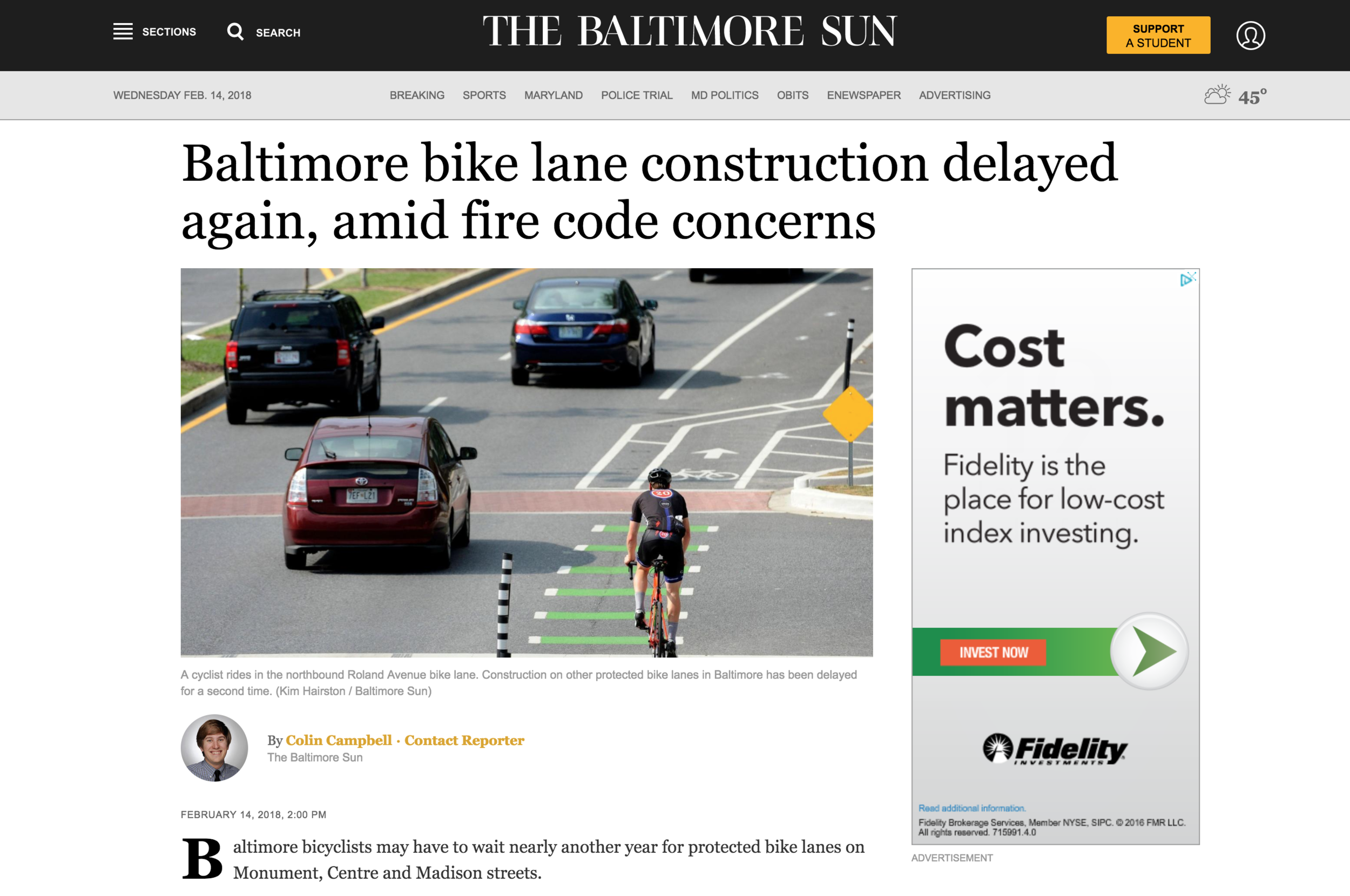What's going on with the Jones Falls extension?
The Jones Falls Trail extension from Cylburn Arboretum to Mount Washington is currently under construction. It includes a bike and pedestrian bridge across Northern Parkway.
What about targeting your 501c4 work to getting good people elected to the Central committee?
Yes, we're constantly working at many levels of government, but there are definitely other folks working more targeted there.
When does the funding for the Downtown Bike Network expire?
We're working to get clarity around this.
What is Bikemore's relationship with the City like post Potomac? Were we "iced out" because of it?
We're still in City Hall most days of the week and are definitely still invited to conversations. We did everything we could behind the scenes through collaborative methods before taking the City to court, and they seem to understand that.
Do you have any early ideas for targeted advocacy we should take for the Complete Streets Bill?
We've been working on building a broad based coalition for Complete Streets since the start, with many council members already on board. So while along with Councilman Ryan Dorsey we're leading the effort on this, we already have many diverse champions and are in a good position.
Do police have any data on the bike crime?
No, the police department doesn't categorize if bikes are involved in crime or even crashes. BPD was cooperative and supportive when we were working with them on the assault issue, but advocating for better stats, while very helpful, doesn't seem like a likely win so we're not focusing energy on it at this point.
What about taking the Mayor on a bike ride?
We've offered before, more than happy to!
Is something going to happen with all those potholes on Druid Park Lake Drive with the Big Jump project?
Yes, if the road is reconfigured that will include repaving. We're concurrently working on a short-term pop up type project here, as well as longer term full redesign effort.
What's strategies are currently working best to advocate in your neighborhood?
Personal notes to senior staffers that work around the mayor, like Jim Smith or Pete Hammen, seem to be particularly effective right now, and individuals that write heartfelt, personal correspondence to these individuals get responses and dialogue.
Communications and transparency from Bike Share doesn't seem to be improving since the relaunch, as promised. What gives?
Just to clarify, Bikemore does not run Bike Share. We try to support them and share our ideas with them, but we don't run it. It's our understanding and hope that this is simply a staffing issue. It's really the city's responsibility to deal with the communications side, not the operator, and there currently isn't DOT staff devoted to bike programming. It's our hope that with the hiring of a Bike Share Coordinator, the communications will be improved. We're also potentially looking into modeling the Bike Ambassador program that Philadelphia Bike Share system has in place, to employ community members to teach others about bike share.
The Bike Share electric bikes aren't working. What's going on?
We've heard that the batteries on the electric bikes don't hold charge well with extreme cold temperatures. If they're not back up to speed after this crazy extreme cold front, we'll get back to it. We're also hopeful that with the announcement of a new major sponsor in February, there will be more accountability and solutions to issues like this.
Is dockless bike share interested in coming to Baltimore?
Yes, we think these companies are interested but understand the current state of Baltimore. Bikemore staff and board members went to DC last month to learn from their DOT staffers that worked on their current pilot program, and to talk with dockless operators. We're working on getting BCDOT to adopt a policy ahead of companies coming here so that we can ensure things like safety standards and equity are requirements at the start, as other cities have done.
What's going on with the Bike Share station at Penn Station?
There's always a challenge when placing Bike Share on Amtrak property, because of the complicated bureaucratic nature of Amtrak. But it's been done in tons of other cities and we're hopeful it will be resolved here as well.







